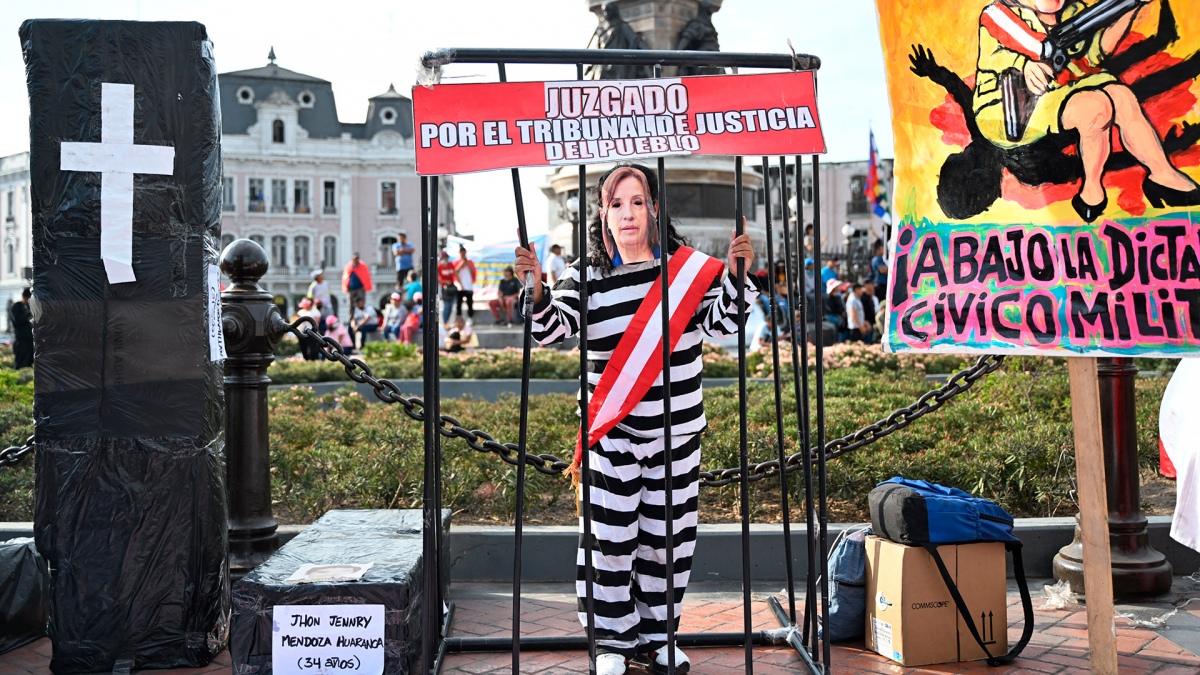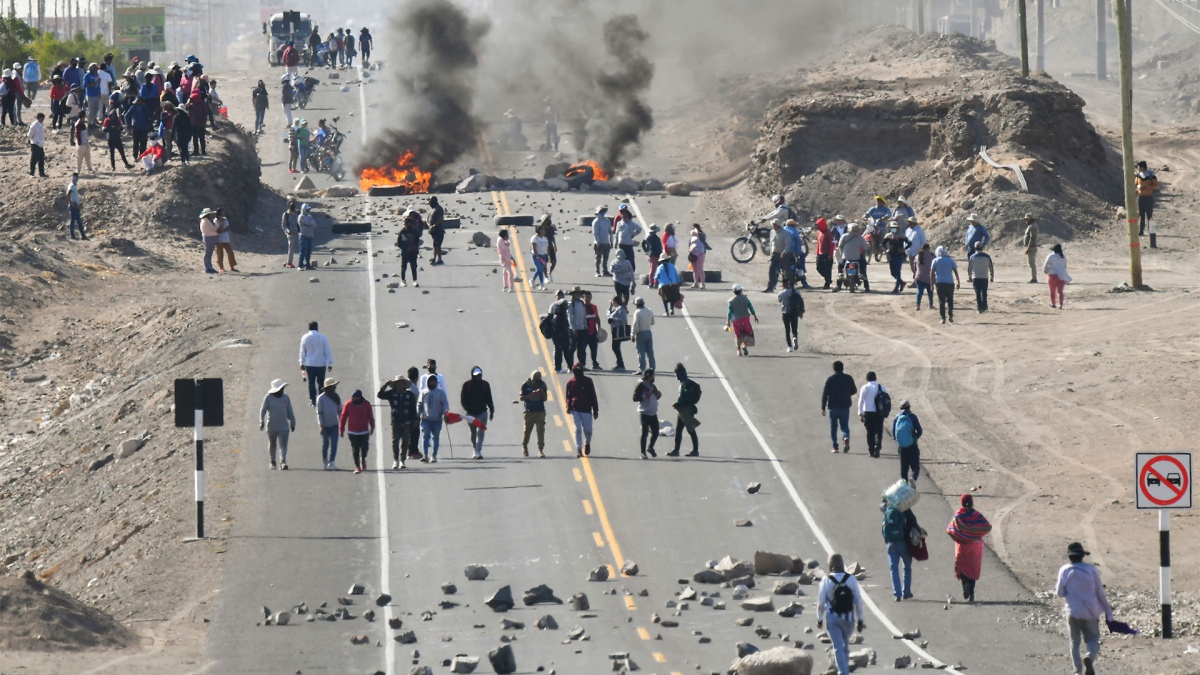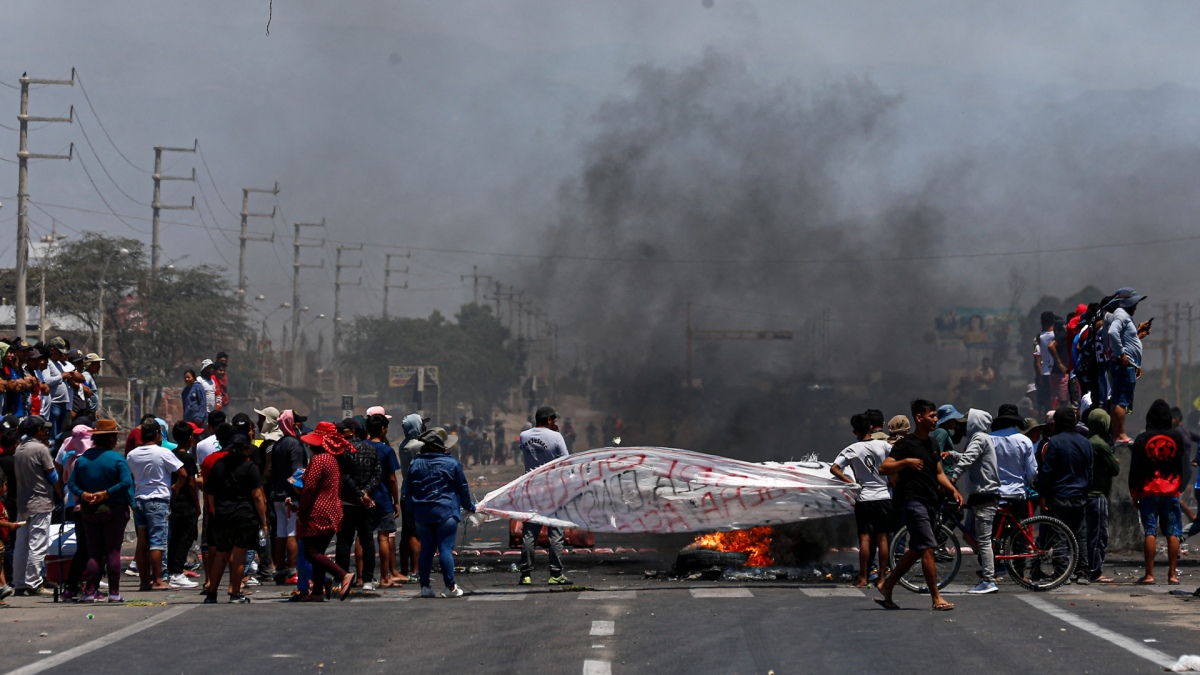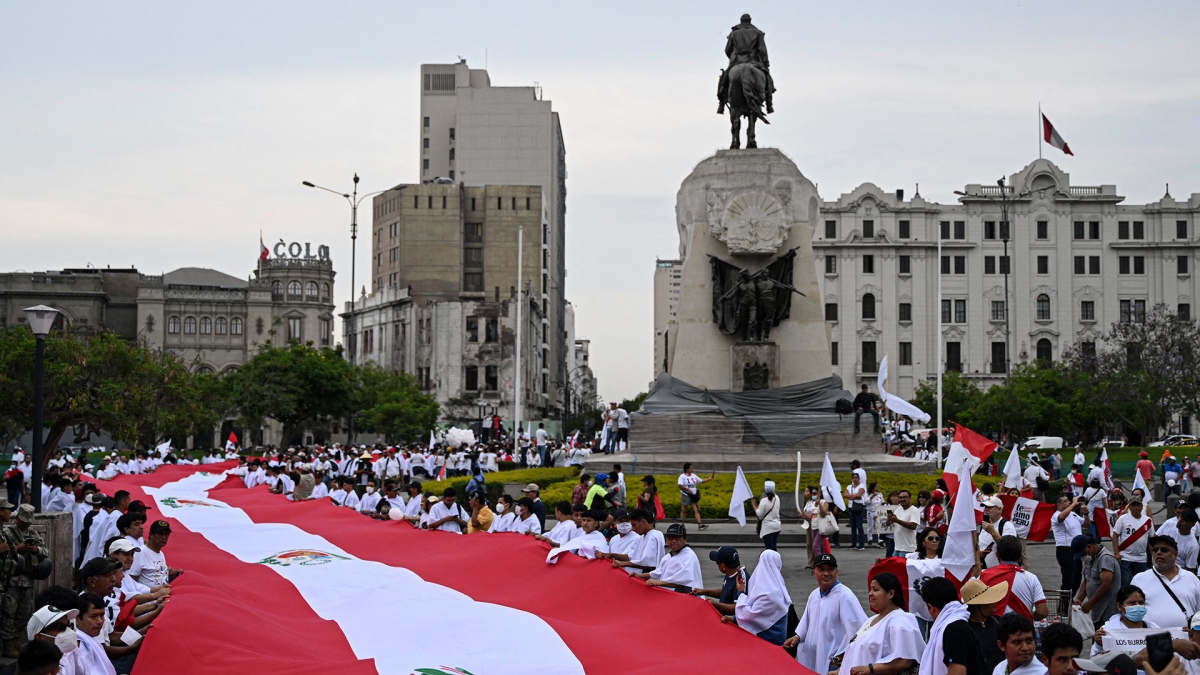 Analysts agree that this Thursday, regardless of its results, will not be a definitive day against Boluarte, but it could be the beginning of a short or medium-term mobilization / Photo: AFP.
Analysts agree that this Thursday, regardless of its results, will not be a definitive day against Boluarte, but it could be the beginning of a short or medium-term mobilization / Photo: AFP.
The Government of Peruvian President Dina Boluarte will have a hard test on Thursday, when thousands of people plan to mobilize throughout the country, especially Lima, to Demand the resignation of a president in whose five-week administration there are already fifty deaths.
Police and military were deployed this Wednesday to avoid as much as possible the arrival of protesters in the capital, which could become the epicenter of protests that until now have been taking place in the interior and, above all, in the historically relegated south of the country.
“We know that they want to take Lima because of everything that is coming out on the networks. And I call you to take Lima, yes, but in peace and calm. I’ll wait for you at the government house to discuss the social agendas you have,” said Boluarte.a Quechua-speaking lawyer born in the Andean south, but who has had problems connecting to the grassroots.
“We know that they want to take Lima because of everything that is coming out on the networks. And I call you to take Lima, yes, but in peace and calm. I’ll wait for you at the Government House to discuss the social agendas you have” Dina Boluarte
Analysts agree that this Thursday, regardless of its results, will not be a definitive day against Boluarte, but it could be the beginning of a short or medium-term mobilization against a president whose resignation has become a cry for a good part of the country.
“I have the impression that the logic of mobilization will continue. It is not that we are going to be, as some fear, facing an assault on power, but it is evident that it will be a new moment that will be felt in Lima and the interior of the country and there the distances between Lima and the interior of the country are going to be shortened”, affirmed the sociologist Eduardo Ballón.
Until now there are marked differences between the provinces -first those of the south and then with different intensity those of the center, north and east-, which are added to the fight against Boluarte, in the face of a metropolis that remains in its usual routine and seems to accept the plan of the president, which points to early elections in April 2024.
 The Government of Peruvian President Dina Boluarte will have a hard test on Thursday, when thousands of people plan to mobilize throughout the country / Photo: AFP.
The Government of Peruvian President Dina Boluarte will have a hard test on Thursday, when thousands of people plan to mobilize throughout the country / Photo: AFP.
This situation changed slightly in the last week, when the capital was also the scene of two massive mobilizations, carried out mainly by students and inhabitants of the northern and eastern cones, the most depressed, to which now the arrival of people from the provinces will be added, which could be thousands.
For the sociologist Omar Coronel, even the reaction of these Lima sectors could be more decisive than that of the visitors, with their obstacles to reach the capital. Lima has been decisive in struggles such as the one that took place in 2000 against the government of Alberto Fujimori or in 2020 against the fleeting five-day mandate of Manuel Merino.
The departure of Boluarte, whom the people seem to hold responsible for the 50 deaths so far, according to the Ombudsman’s Office -41 civilians killed in clashes with the Armed Forces, mainly by bullets; a policeman burned alive inside his patrol car and eight victims of the blockades – has become a central point on the agenda.
But the 60-year-old president, who came to power on December 7 as vice president of the dismissed Pedro Castillo, refuses to resign, because He says that it is his constitutional duty to continue and that what there is is an offensive of “extremist spurs who want chaos and anarchy.”
The demands include the closure of the unpopular Congress, controlled by the right and now an ally of the Executive, the holding of general elections this year, the convening of an Assembly that changes the 1993 Constitution and freedom for Castillo, in provisional detention since he was dismissed. while attempting his own hit.
 Photo: AFP.
Photo: AFP.
Some demands, in the light of experts, may sound incoherent: for example, if Boluarte resigns and Congress closes, who will make the choices? Perhaps the questioned military? Because a return of the ousted former president is not viable. For analysts, this is explainable in the midst of the dispersion of the protest leaders.
“The main characteristic of the mobilizations is that they do not have an organizational hierarchy,” affirmed the political scientist Fernando Tincopa, who believes that for this reason they have gone from “populist” principles to a scenario of “social chaos.”
Spokesmen for the Government and the Armed Forces have dedicated themselves to disseminating that the leaders are members of the disjointed guerrillas, of terrorism, of representatives of underground economies such as drug trafficking or illegal mining, or even agents of former Bolivian President Evo Morales, whom He was prohibited from entering the country and is being prosecuted for “treason against the homeland.”
Independent analysts do not rule out that there are extremists among the agitatorsrepresentatives of dark interests and Quechua and Aymara ethnic fighters against Lima’s criollismo, but this is not enough to explain a malaise that has more to do with the historical exclusion social, economic, cultural and political in a strongly centralized country.
According to a survey this week by the Institute of Peruvian Studies, Boluarte is rejected by 71% of citizens, which rises to 80% in the south and 87% in the center. Congress is rejected by 88%.
For analysts, the great cause of the divorce is that Boluarte, when he took office, said that he would govern until 2026, the original end of the mandate, which implied not only giving three and a half more years of validity to the repudiated Congress, but also neglecting the popular clamor which, in 83%, demanded immediate general elections.
 Photo: AFP.
Photo: AFP.
The president, ideologically formed on the left, backed down and announced elections for December 2023 -in Congress they did not want before April 2024-, but by then there were several deaths, with complaints of excessive force in the repression and the environment it was on fire
In departments like Puno, Ayacucho or Apurímac -the native of Boluarte-, the dead are counted by tens. There were also in Cusco, Arequipa and La Libertad. There are hundreds of wounded and a large number of detainees, of which only one, Rocío Leandro, had a documented alleged known past in Sendero Luminoso.
The two marches carried out so far in Lima have been completely peaceful and observers estimate that the same will happen on Thursday, although the scenario is projected to be more risky.
In some sectors, an exit proposal began to move: that Boluarte and the president of Congress, José Williams – who would have to succeed her, but is also very resisted – resign and that a figure of consensus assume in Parliament that as interim head of state lead the elections.
But Congress thinks differently: parliamentarians from right-wing parties such as Fuerza Popular, Renovación Popular and Avanza País ask not to give in and instead increase the force of the repression, while a large part of what were the Castillista benches take extreme positions.


